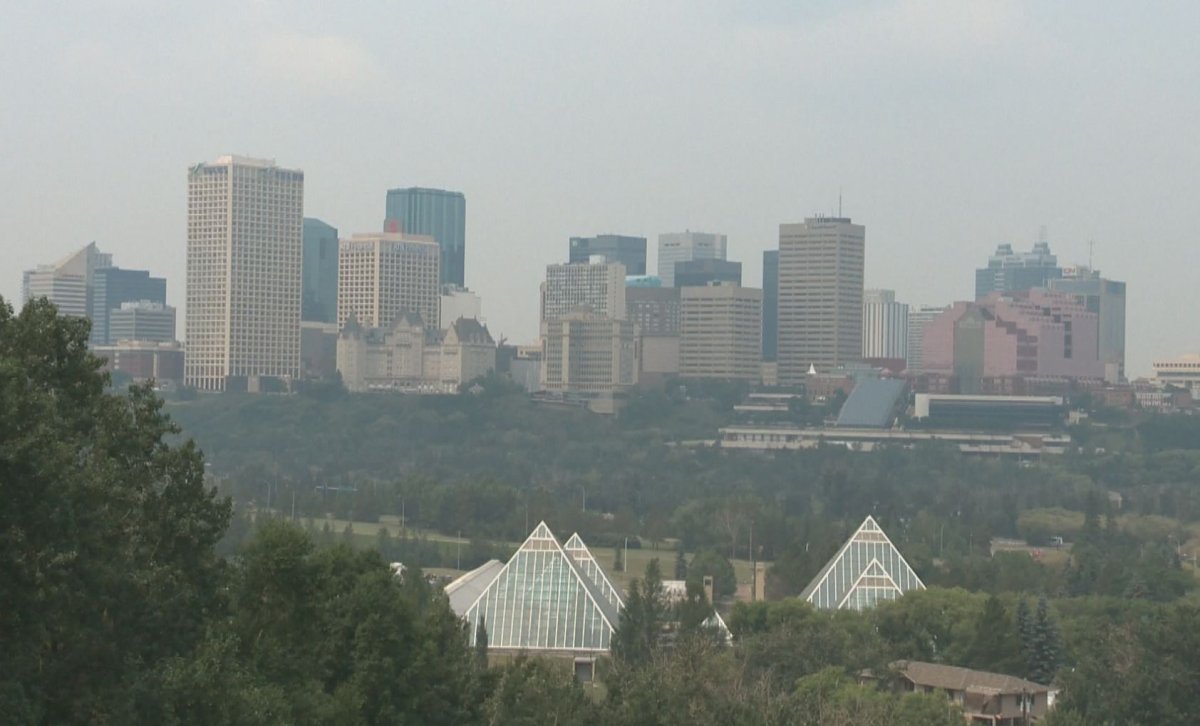EDMONTON – Smoke from forest fires burning in the Northwest Territories is currently impacting air quality in some parts of the province, according to Alberta Health Services (AHS), prompting it to expand the precautionary air quality advisory.

The first precautionary air quality advisory was issued July 7. On Thursday, more areas of Alberta were added. The areas that are now under a precautionary air quality advisory are:
– all communities in the North AHS Zone
– Edmonton
– all communities in the Central AHS Zone
AHS is advising people in those areas to be aware of and take precautions against potential health concerns that can be associated with smoky air conditions. If you can taste and/or smell smoke in the air, AHS recommends that you:
- monitor your symptoms;
- minimize physical activity outdoors;
- consider remaining indoors with windows, doors and outdoor air circulation fans/vents closed.
Friday morning, the Air Quality Health Index for Edmonton increased to a level 3, which is still in the ‘low risk’ category.
Alberta Wildfire Management has been posting information on the fires and the smoke on social media. It says smoke from those wildfires is drifting into Alberta, and is even visible in Edmonton. Smoke from wildfires in the Northwest Territories is drifting into Alberta, and is even visible in Edmonton. At 2 p.m. Monday, Edmonton’s Air Quality Health Index was raised to level four, or “moderate.”
You can look at smoke forecasts here.
Although minor smoke conditions do not typically cause health concerns in healthy individuals, if smoke conditions become more severe, AHS says even healthy individuals may experience temporary irritation of eyes and throat, and possibly shortness of breath. Individuals with respiratory conditions (such as COPD and asthma), and individuals with existing cardiovascular conditions (such as angina, previous heart attack and congestive heart failure), may notice a worsening of symptoms, due to the smoky air conditions. Individuals experiencing symptoms can also call Health Link Alberta 24 hours a day, seven days a week, toll-free at 1.866.408.LINK (5465), to speak to a registered nurse.
Meanwhile, a 5,600-hectare wildfire burning near Rocky Mountain House has closed access to parts of the forest near the area in southwest Alberta.
As of 9 a.m. Friday morning, the province restricted access to portions of the forested area west of Rocky Mountain House due to “risks to public safety.” Authorities say the wildfire’s behaviour and fire hazard conditions are extreme.


Comments